Cultural immersion is an important part of every Uncharted Philippines adventure. And since food is one of the most significant cultural expressions, we consider it our duty to give our guests a true culinary adventure. Here are six of the best dishes on our adventure menu:
-
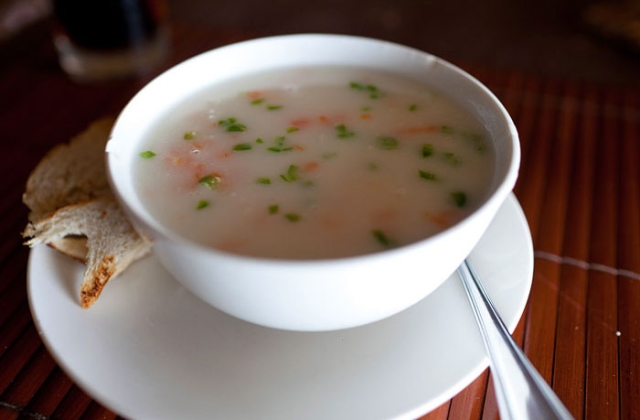
soupe de nido Nido Soup Palawan
El Nido got its name for the birds' nests collected from its limestone cliffs. Small birds called cave swiftlets use their saliva to spin their nests which are then collected, cleaned and cooked with chicken stock, egg and salt to make soup. The dish originated in China and as with many exotic oriental dishes is considered to be an aphrodisiac.
-
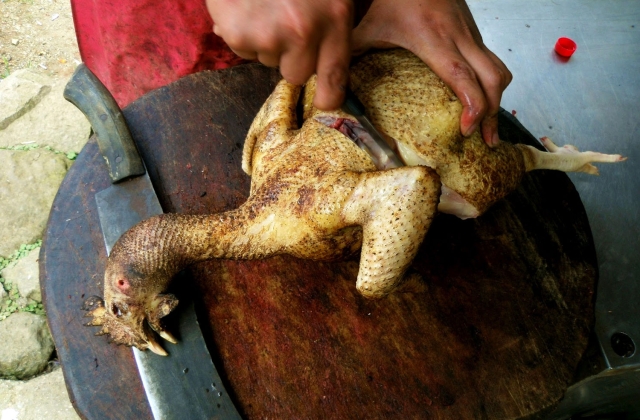
poulet battus Pinikpikan Manok (Beaten Chicken) Cordillera
Animal rights advocates look away now. The first two ingredients of pinikpikan manok are a chicken and a stick. The chicken is beaten to death and its body becomes a massive blot clot. The feathers are charred off in an open fire then the bird is cooked as a soup dish. The clotted blood makes the meat dark and gives it a distinct taste, while the charring of the chicken gives the skin a slight crunch and a toasted flavor.
-
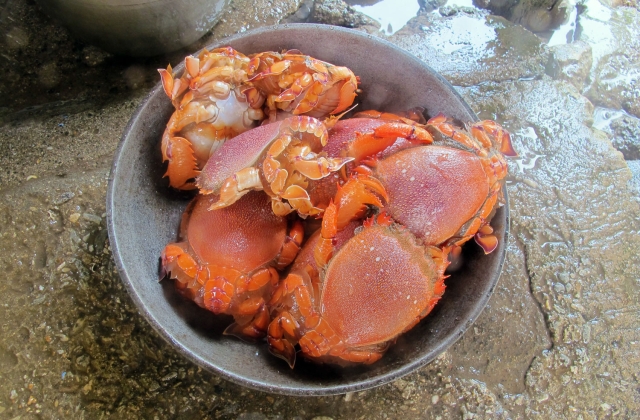 photo by Leo Cuesta
photo by Leo Cuesta
crabes pantoufles Steamed Curacha Babuyan Islands
No, we don't eat cockroaches in the Philippines, though many locals call the curacha "sea cockroach". The odd-looking crustacean is actually a type of crab called the spanner or red frog crab. Its claws are small and most of its edible parts are in its body. The first step to eating a curacha is to get over its strange appearance. Then you simply lift of its shell starting from its rear end, suck in its juices then dig into its delicious meat.
-
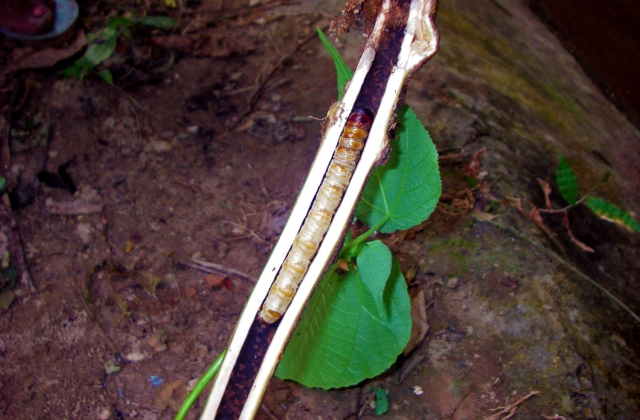 photo by Leo Cuesta
photo by Leo Cuesta
larve coléoptère Roasted Beetle Larvae Lubang Island
Lubang locals find this grub by looking for wood shavings clumped in a ball stuck to the side of a specific type of tree sapling. This is the burrowing entrance of the beetle larvae that feeds on the core of the doomed sapling. The grub can be eaten raw – be sure to twist off the head and squeeze out the guts – but locals prefer it roasted. The larvae is rich, fatty and tastes like cashew.
-
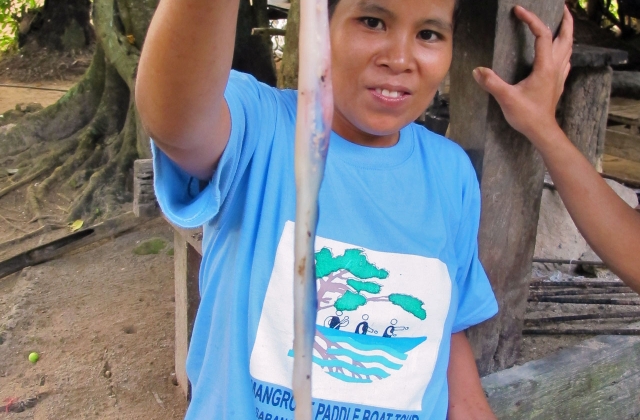 photo by Leo Cuesta
photo by Leo Cuesta
Tamilok - Un mollusque mangé comme une spécialité locale Raw Tamilok (Mangrove Wood Worm) Palawan
The long, white, intimidating worm is actually a mollusk that is found burrowed in dead wood in the mangroves of Palawan. Locals look for telltale holes in rotting logs and hack open the wood to reveal what appears to be live phlegm. Best eaten raw with a splash of calamansi (local lemon), these foot-long delicacies feel and taste almost exactly like oysters.
-
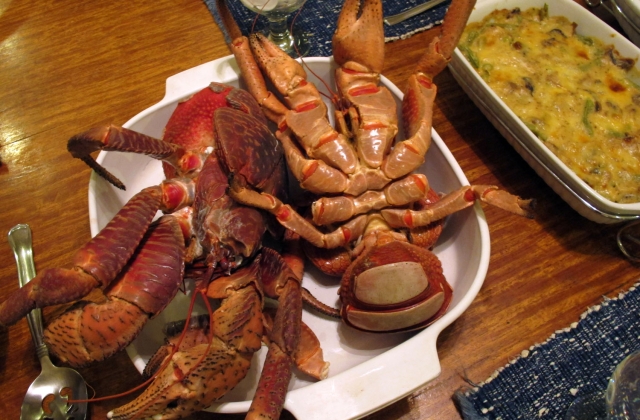 photo by Leo Cuesta
photo by Leo Cuesta
crabes de cocotier Steamed Coconut Crab Babuyan Islands
Easily weighing over two pounds and looking more like a giant spider than a crab, this monster goes beyond exotic and bizarre to downright scary. It gets its name for its ability to de-husk and crack open coconuts with its claws to feed on the meat. The coconut crab lives in rock crevices in seaside forests and locals hunt for it at night by using coconut as bait or by simply waiting and pouncing on the creature when it emerges to forage. Cooked, its legs and claws taste like regular crab but its swollen abdomen is filled with thick yellow fat that tastes like toasted coconut.

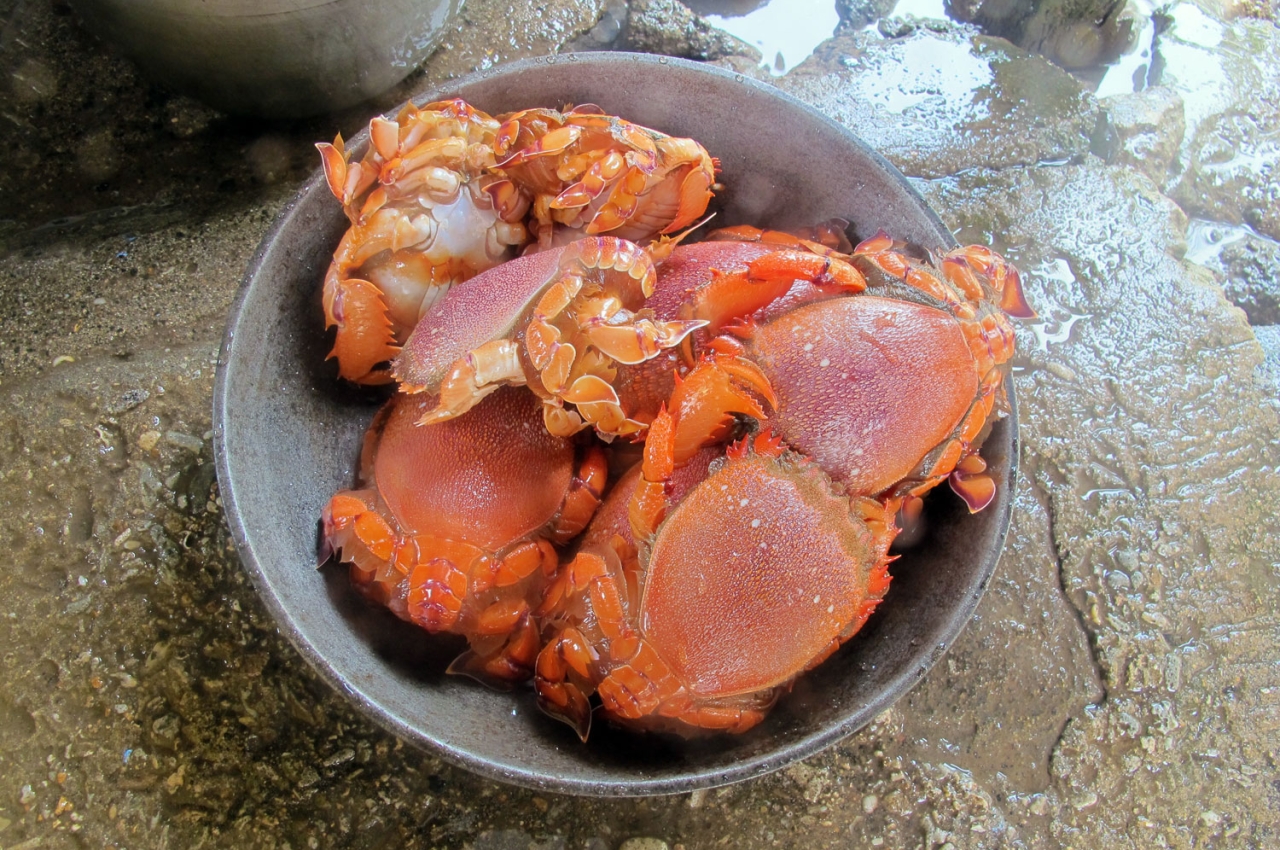 photo by Leo Cuesta
photo by Leo Cuesta